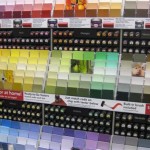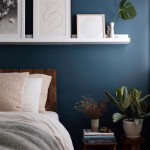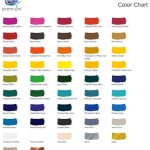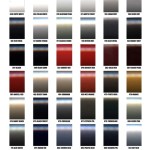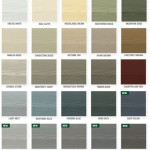Do You Paint Exterior Door Frame Same Color? Considerations for a Cohesive Design
The question of whether to paint an exterior door frame the same color as the door itself is a common one among homeowners undertaking exterior renovations or simply looking to refresh their home's curb appeal. The answer, however, is not a simple yes or no. It depends heavily on several factors, including the architectural style of the house, the desired aesthetic, the color palette being used, and the material of the door and frame. Understanding these factors is crucial for making an informed decision that complements the overall design and visual appeal of the home.
Painting the exterior door frame involves more than just aesthetic considerations. The frame serves as a critical structural component, protecting the door and sealing the entrance against the elements. Therefore, proper preparation and the use of high-quality, weather-resistant paint are essential to ensure the longevity of both the door and the frame.
Architectural Style and Historical Accuracy
Architectural style plays a significant role in determining whether the door frame should match the door's color. Certain architectural periods have specific conventions regarding trim and door colors. Victorian homes, for example, often feature contrasting colors for doors and frames to highlight intricate details and moldings. Colonial-style homes, on the other hand, might traditionally use a single color for both the door and frame to create a more uniform and understated appearance.
Researching the historical accuracy of color schemes for a particular architectural style can provide valuable insights. Historical societies and architectural preservation groups often have resources that detail appropriate color palettes and design elements for different periods. Adhering to these guidelines can enhance the authenticity and historical value of the home.
Even if strict adherence to historical accuracy is not the primary goal, understanding the underlying principles of these styles can inform the color choice. The goal is to create a cohesive and visually appealing exterior that is in harmony with the architectural design.
For modern or contemporary homes, the options are generally more flexible. A single color for the door and frame can create a sleek and minimalist look, emphasizing clean lines and geometric shapes. Alternatively, contrasting colors can be used to add visual interest and highlight the entrance as a focal point.
Aesthetic Goals and Color Palette
The desired aesthetic is a key determinant in the choice of color for the door frame. Do you want the door to stand out as a bold statement, or do you prefer a more subtle and integrated look? A contrasting color will naturally draw attention to the door, while matching the frame to the door will create a more unified appearance.
The overall color palette of the home is also a crucial consideration. The door and frame colors should complement the siding, trim, and other exterior elements. Using a color wheel can be helpful in identifying complementary or analogous colors that create a harmonious and balanced look. Consider the undertones of the existing colors and choose a door and frame color that works well with those undertones.
Darker colors, such as black or deep charcoal, can create a dramatic and sophisticated look, especially when paired with lighter siding. Lighter colors, such as white or cream, can create a more welcoming and airy feel. Bold colors, such as red or blue, can add personality and visual interest, but should be used judiciously to avoid overwhelming the overall design.
It is also important to consider the surrounding landscape and the overall setting of the home. The color of the door and frame should complement the natural environment and enhance the curb appeal of the property. A site visit at different times of the day can help to assess how the colors will appear in different lighting conditions.
The choice of finish, such as matte, satin, or gloss, can also affect the overall aesthetic. A high-gloss finish will reflect more light and create a more polished look, while a matte finish will create a softer and more subtle appearance. The choice of finish should be consistent with the overall style of the home and the desired level of formality.
Material Compatibility and Durability Considerations
The material of the door and frame can influence the choice of paint color and the type of paint used. Different materials have different properties and require different types of paint for optimal adhesion and durability. For example, wood doors and frames typically require a primer and topcoat that are specifically designed for exterior wood surfaces.
Metal doors and frames may require a different type of primer and paint that is resistant to rust and corrosion. Fiberglass doors and frames often require a specialized paint that is formulated to adhere to the smooth surface of the fiberglass. Understanding the specific requirements of each material is essential for ensuring a long-lasting and durable finish.
When choosing a paint color, it is also important to consider the potential for fading or discoloration over time. Darker colors tend to absorb more heat and may fade more quickly than lighter colors. Using a high-quality paint that is formulated with UV inhibitors can help to protect the paint from fading and maintain its color vibrancy over time.
Furthermore, the type of paint used impacts the longevity of the door frame's protection against weather elements. Exterior paints are formulated to withstand moisture, sunlight, and temperature fluctuations. Choosing a paint that is specifically designed for exterior use is critical for protecting the door and frame from damage and prolonging their lifespan.
Consider the condition of the existing door and frame before painting. Any cracks, holes, or damage should be repaired before applying new paint. Proper preparation, including cleaning, sanding, and priming, is essential for ensuring a smooth and durable finish. Neglecting these steps can lead to peeling, chipping, and other problems that can compromise the appearance and integrity of the door and frame.
Ultimately, the decision of whether to paint the exterior door frame the same color as the door rests on a careful evaluation of these factors. There is no single correct answer, and the best choice will depend on the individual circumstances of each home and the desired aesthetic. By considering the architectural style, color palette, material compatibility, and durability considerations, homeowners can make an informed decision that enhances the beauty and value of their property.

Do I Paint The Trim Around Front Door Same Color As
Paint Your Front Door The Right Way Beckwith S Treasures

How We Made Our Front Door Look Bigger With Paint A Pretty Happy Home

Tips And Tricks For Painting Your Front Door Liberty Homes

Should All Exterior Doors Be The Same Color Door Colors French

Should The Sidelights Match Front Door Or Trim Decorologist

My Front Door How I Painted It To Look Bigger Mom Can Do Anything

After Door And Trim Same Color Exterior Colors Front Paint Green Doors

Painting Exterior Edges

How To Choose A Front Door Color Quality Overhead
Related Posts

